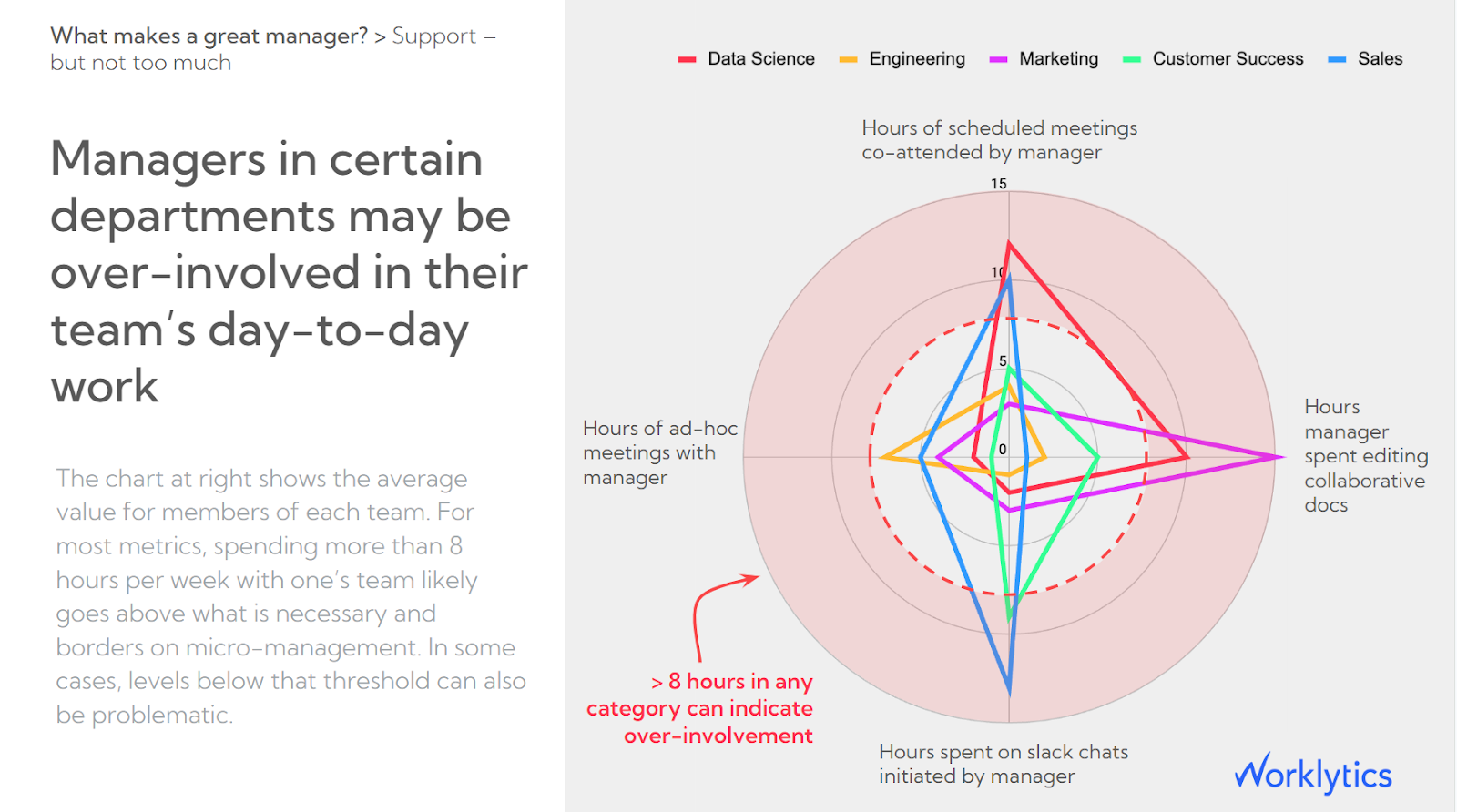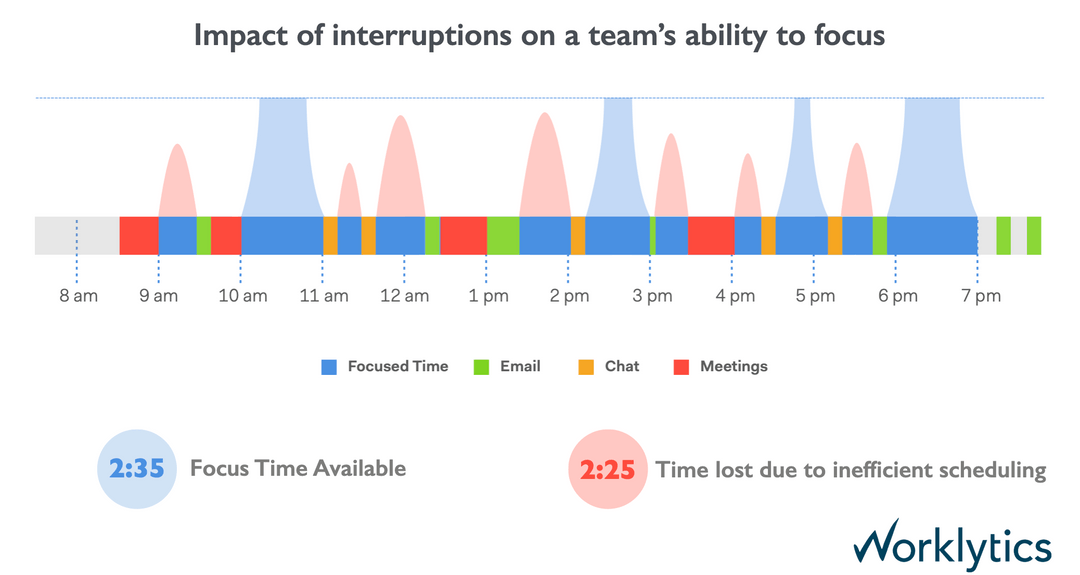
No one likes a micromanager, and no one plans to become one. Yet despite our best intentions, micromanagers pop up everywhere; there’s a reason they’re a staple of workplace humor.
We all want our teams to succeed, but that drive can lead us to step in more than we should. It might start with offering a bit of “help” here and there, but before long it snowballs into over-involvement.
Even new managers worry about accidentally crossing that line; it can feel like there’s a fine line between being an over-involved manager and an absent one.
Clearly, this is a habit worth breaking. So how can you tell if you’re edging into micromanagement and how can you stop?
How do you know if you’ve crossed from supportive leadership into micromanaging? Here are some classic warning signs to watch for:
If you caught yourself nodding to a couple of these signs, you might be (unintentionally) micromanaging. The first step is awareness, recognizing the behavior. Next, it’s important to understand why it happens and when to step back.
Micromanagement rarely comes from bad intentions. Most of the time, it is rooted in a manager’s desire to ensure success but taken too far. When you peel back the behavior, micromanagement is often a symptom of deeper patterns rather than a deliberate style choice.
1. Fear of failure.
Many managers step in too often because they fear that mistakes will reflect poorly on them or their teams. In fast-paced organizations where performance metrics are constantly scrutinized, even small errors can feel high-stakes. Hovering becomes a defense mechanism, an attempt to prevent missteps before they happen. Unfortunately, this creates dependency instead of resilience.
2. Lack of trust.
When leaders doubt that their team will meet expectations, it becomes hard to delegate confidently. This is not always about mistrusting people’s abilities; it can stem from unclear communication, uneven performance, or a manager’s past experiences. Still, constant oversight erodes the very trust that strong teams rely on.
3. Insecurity and control.
New or uncertain leaders sometimes equate visibility with effectiveness. They assume that being involved in every detail signals diligence, when in fact it signals anxiety. This control reflex can lead to overcorrection, fixing things that do not need fixing, or making decisions that should be left to others.
4. Cultural and structural pressures.
Micromanagement is not just personal; it can also be systemic. If your organization celebrates flawless execution but rarely rewards autonomy, managers may learn to overmanage just to stay safe. Similarly, when goals are ambiguous or performance metrics unclear, over-involvement can feel like the only way to stay aligned.
5. Lack of leadership training.
Many managers are promoted for their technical skill, not their people leadership experience. Without guidance on how to lead through delegation, feedback, and coaching, they default to what they know—doing the work themselves or closely supervising others.
Recognizing these triggers is the first step toward changing them. Once you understand why you micromanage, you can start to replace those habits with leadership behaviors that build trust, autonomy, and long-term team strength.
If you realize you’ve been micromanaging, don’t panic. You can course-correct and become a more empowering leader. Here’s what to do instead of micromanaging:
By adopting these practices, you shift from controlling to coaching. You’ll still be involved, but in a positive way – setting vision, providing resources, and clearing roadblocks, rather than micromanaging every move.
Team members genuinely want support from their managers, but no one thrives under constant supervision. The challenge for leaders is knowing when involvement becomes interference. Striking that balance requires awareness and a bit of data to help keep perspective.
At Worklytics, we use metrics that help leaders understand their management patterns objectively. One key measure is Manager Co-Attendance, which tracks how often managers and their direct reports join the same meetings. When this number rises above about 30%, it may suggest a tendency toward micromanagement. Very low co-attendance can indicate the opposite issue, where the manager is too distant. The healthiest range is around 20–30%, where managers stay connected and supportive without becoming over-involved.

Co-attendance is just one part of the picture. Worklytics also provides insight into Focus Time and Collaboration Hours, two factors that reveal how effectively teams are working.
When these metrics are balanced, it suggests a productive rhythm between teamwork and independent execution. However, when managers join too many meetings or request frequent updates, Focus Time tends to decline, reducing overall productivity.

By combining Co-Attendance, Focus Time, and Collaboration insights, leaders can see whether their presence supports progress or slows it down. A manager with moderate co-attendance, steady collaboration, and healthy focus hours is likely creating the right environment for performance and trust.
These insights do more than measure activity; they bring peace of mind. Managers can see that their teams are productive without needing to monitor every detail. Employees, in turn, feel trusted to manage their responsibilities with autonomy. This balance reduces pressure on both sides, creating a workplace where guidance and independence coexist and where productivity grows naturally from trust instead of control.

Unlock healthier team dynamics with Worklytics. Understand how your leadership style influences focus, collaboration, and trust. Get the insights you need to guide your team effectively without relying on guesswork. Start using data to lead with balance and confidence today.